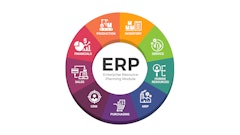
In the face of mixed economic signals, many businesses today are uncertain of the steps they need to take to best position themselves for growth in the months and years to come.
Organizations are faced with issues on multiple fronts, painting a concerning picture for CFOs. There are reports highlighting evidence of an economic slowdown. Positive jobs and still-strong unemployment data are driving ongoing labor shortages. Inflation numbers hover around levels not seen in four decades, leading to significant price increases. These factors compound the issues leadership teams continue to work through in the face of persistent supply chain, excess inventory and employee attrition challenges.
This backdrop, combined with rising interest rates as fiscal policymakers attempt to cool inflation, is certainly enough to fuel fears of imminent recession. Economic predictions however continue to be mixed, with a significant number of more positive indicators creating uncertainty about the market outlook. This situation has caused CFOs to delay key budget decisions as they develop financial plans and organizational initiatives for FY23.
More bearish CFOs are looking to reduce operating costs wherever possible. Traditionally, full-time equivalent (FTE) reductions are the first area businesses target to achieve this. However, cutting headcount reduces operating capacity and the ability to compete in market. If more positive indicators turn out to be true, this will introduce continuity risk and delay financial performance. Similarly, as organizations emerge from a potential recession and look to grow, having to search for talent in a tight labor market will slow their rate of recovery.
In either case, reductions in staff can have unintended consequences, such as the loss of valuable institutional knowledge needed for efficient operations and future growth. And resorting to quick layoffs can create tension with remaining employees and undercut workplace morale, leaving a lasting negative impact on a company’s culture.
But the choice for CFOs does not need to be so stark or draconian. A more sustainable path to profit improvement lies in an organization’s third-party expenditures. Indirect (or non-merchandise) expenses typically equate to 20% of a business’s annual revenue and targeting this cost base can yield cost reductions of between 7-12%, representing a significant and immediate profit improvement opportunity.
Indirect procurement: A path to rapid and sustainable cost reductions
Achieving these cost reductions requires appropriate resources, technology, and organizational governance. In many businesses however, indirect procurement teams are under-resourced and do not have the tools or the organizational sponsorship needed to drive accelerated and meaningful impact.
Effective indirect procurement functions can drive rapid profit improvement across a range of different areas. For example, organizations can often achieve immediate value through direct negotiations with incumbent suppliers; this is the case particularly where procurement has not had prior involvement because certain business units have managed relationships directly, or where significant time has elapsed since prior negotiations.
High-performing teams will also be able to drive value from areas of spend that may not be obvious targets. Categories such as credit card processing fees, employee benefits, media buying and utilities expenditures all represent significant opportunities.
Similarly, more strategic initiatives such as contingent labor consolidation and negotiation, software-as-a-service (SaaS) license reduction and transition to preferred vendors, facilities maintenance consolidation, small parcel optimization and opportunistic sourcing of transportation categories are all also high-value opportunities for cost reduction and waste elimination.
Indirect procurement as the enabler
The opportunities to cut costs exist across all lines of business but knowing where to look and how to find them is sometimes easier said than done. This is where a high-performing indirect procurement team can play a crucial part through speed and precision.
Teams that can rapidly evaluate corporate expenditures, prioritize opportunities by size and effort and deliver them as part of a broad strategic plan with supplier recommendations, market intelligence, benchmarks and effective execution and implementation capabilities will be successful.
All too often, however, indirect procurement teams have not had investment in resources, technology or external market intelligence that would enable this kind of performance. When well-managed, ROI on indirect procurement investments can range from 4- to 20-plus times value and typically self-fund through savings within the first fiscal year of their deployment.
Look to procurement initiatives before headcount reductions
For most companies, failing to understand the scope and detail of their third-party expense commitments is a persistent problem. Regardless of the economic environment, many CFOs do not have a sufficiently comprehensive understanding of their organizational expenditures; they often cannot quickly establish what they’re purchasing, from whom they’re buying it, or how much they’re paying for it. When facing a difficult turn in the economic cycle, the first instinct to therefore cut personnel and growth-enabling functions can limit capacity to compete or to ramp back up post-recovery.
CFOs can take a different, more targeted approach. In partnership with a high-performing procurement function, CFOs can drive immediate and sustainable value from indirect third-party expenses. Ultimately, cost reductions achieved on third-party expenditures represent increased operational efficiency, reduced waste and faster, leaner execution capabilities. These are smart business decisions, whether the forecast is recession or growth.
In addition to driving these cost reductions across the organization's expenditures, effective Procurement teams will also deliver against a range of broader priorities: business continuity, corporate responsibility, and supplier risk management to name a few, further increasing the overall case for the procurement function as a profit center and business value enabler for the organization.
Rapid headcount reduction may look good on a short-term balance sheet, but it is more often than not the wrong and more expensive play over the long term. For more efficient and sustainable outcomes, building a high-performing indirect procurement team should be a priority for organizations. It’s the right business decision, regardless of what the future holds for our economy.



















